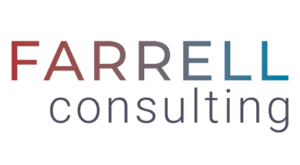How to Build a Healthy Workplace
by Katherine Sanders
INTRODUCTION
A healthy workplace continually improves the health, safety and wellbeing of all employees while sustaining business productivity. It is also a key requirement for an innovative organization because healthy employees have more capacity for creativity and change.
WHAT IS A HEALTHY WORKPLACE
A healthy workplace meets people’s needs, reduces the risk of doing people harm, and promotes organizational sustainability.
Because how we work has a large impact on public health, governmental agencies have created frameworks for promoting health at work. For example, the World Health Organization (WHO) and the National Institute for Occupational Safety and Health (NIOSH) guide employers interested in the sustainable productivity of their workforce.
WHY HAVING A HEALTHY WORKPLACE MATTERS
A healthy workplace matters to employees, employers and the public. In his book, Dying for a Paycheck, Stanford professor Jeffry Pfeffer estimates that job stress costs U.S. employers more than $300 billion annually and may cause 120,000 avoidable deaths each year.
When talking about healthy workplaces, include not only the traditional safety risks but also the extensive and expensive effects of chronic stress induced by the way the work system was designed and is led.
There are many benefits of a healthy workplace, including:
- Minimizing human suffering
- Increasing organizational productivity
- Attracting and retaining employees to reduce churn
- Reducing healthcare costs
- Making it easier to capitalize on opportunities
- Improving public health
HOW TO DESIGN A HEALTHY WORKPLACE
Maslow’s Hierarchy of Needs is a great starting point for designing health into work. Maslow’s framework describes the needs all humans have and are motivated to achieve. A healthy workplace environment helps people meet these needs, ranging from survival and safety, to belonging, esteem and growth.
Another way to design a healthy workplace is to use a job analysis. This is used to talk with employees in-depth about their work because it’s a systematic way to assess the strengths and weaknesses of a job.
Next, meet with each employee to discuss their responses, being sure to include their supervisor and human resources representative. The goal is to rethink the job together, listen to people’s concerns and respond with realistic and meaningful workplace changes.
Job analysis also raises issues that aren’t precisely about the job’s design but are important to building trust, raising morale and increasing the organization’s capacity for change. Done thoughtfully, job analysis gives employees an opportunity to give input into the design of their own jobs and the way their workplace functions.
FOR MORE INFORMATION
Sanders Consulting and Farrell Consulting specialize in helping teams implement change in higher education and healthcare.




Leave a Reply
Want to join the discussion?Feel free to contribute!